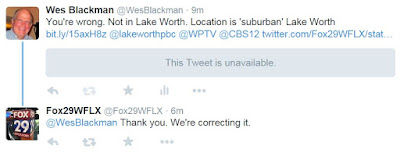Jocelyn Skolnik came to the United States from Guatemala in 2003, a brave 18-year-old on an international student’s visa. She came to study political science at Florida Atlantic University’s Wilkes Honors College. Today, Skolnik, 30, is the executive director of El Sol, a successful, innovative neighborhood resource center for immigrants in Jupiter. [emphasis added]
Soon after she arrived at FAU, Skolnik met her adviser, Dr. Timothy Steigenga, a political science professor and department chairman whose research focuses on religion and politics in Latin America. Steigenga recruited her to work on a survey of the local, largely Guatemalan, immigrant population in Jupiter.
[and. . .]
Sometimes the right thing to do is to refer people to existing programs, Skolnik said, but educating people about available services was another challenge. But every time El Sol solved someone’s problem, word spread. “They started trusting the center,” Skolnik said, and the community did, too.[and. . .]
Skolnik said she’s most proud that her hard work has helped overcome the skepticism and the negative opinions about El Sol. But she doesn’t like taking the credit. Of El Sol’s success, Skolnik said, “I think it’s the people around me. We have some really great leaders in the community who are willing to give support. I just shed light on these needs and people support us.
Jupiter’s unique solution has garnered the town and Skolnik with well-deserved praise. A 2011 New York Times editorial about El Sol said: “Nobody has the one big immigration answer. But Jupiter has an answer.” It called Jupiter “a wise community” and its solution “extraordinary.”Jocelyn Skolnik's approach has been very successful: working with the community, neighborhood associations, and the local municipality to solve problems. If you would like to learn more about El Sol visit their web site and you can learn more about their clinic here.
Then, in 2013, Skolnik was named a Champion of Change by President Barack Obama. The award recognizes individuals who have worked to promote positive change in their communities. She was recognized at a ceremony at the White House.
“I could not believe it,” said Skolnik, who recently moved to Palm Beach Gardens with her husband and 3-year-old daughter. She didn’t even know she’d been nominated. Her family was invited to come to the ceremony. “My father came from Guatemala.”






























![Dr. W. H. Cotton’s ode: “Oh, My Lake Worth, Florida!” [circa 1920].](https://blogger.googleusercontent.com/img/b/R29vZ2xl/AVvXsEjUL75cv6zJQFjX15ojOIIz9AjnbqH4asHJTYSDhnGnYr7rJZRha1NcNTirj2xPcId158vkz5Hw-wXgOfrlztj8Zr8jLFFCfuEN6PyV44ZlpMRmJ68xbtFL9vzxNiG7xDs_HJvm/s1600/LakeWorthPioneers.JPG)





